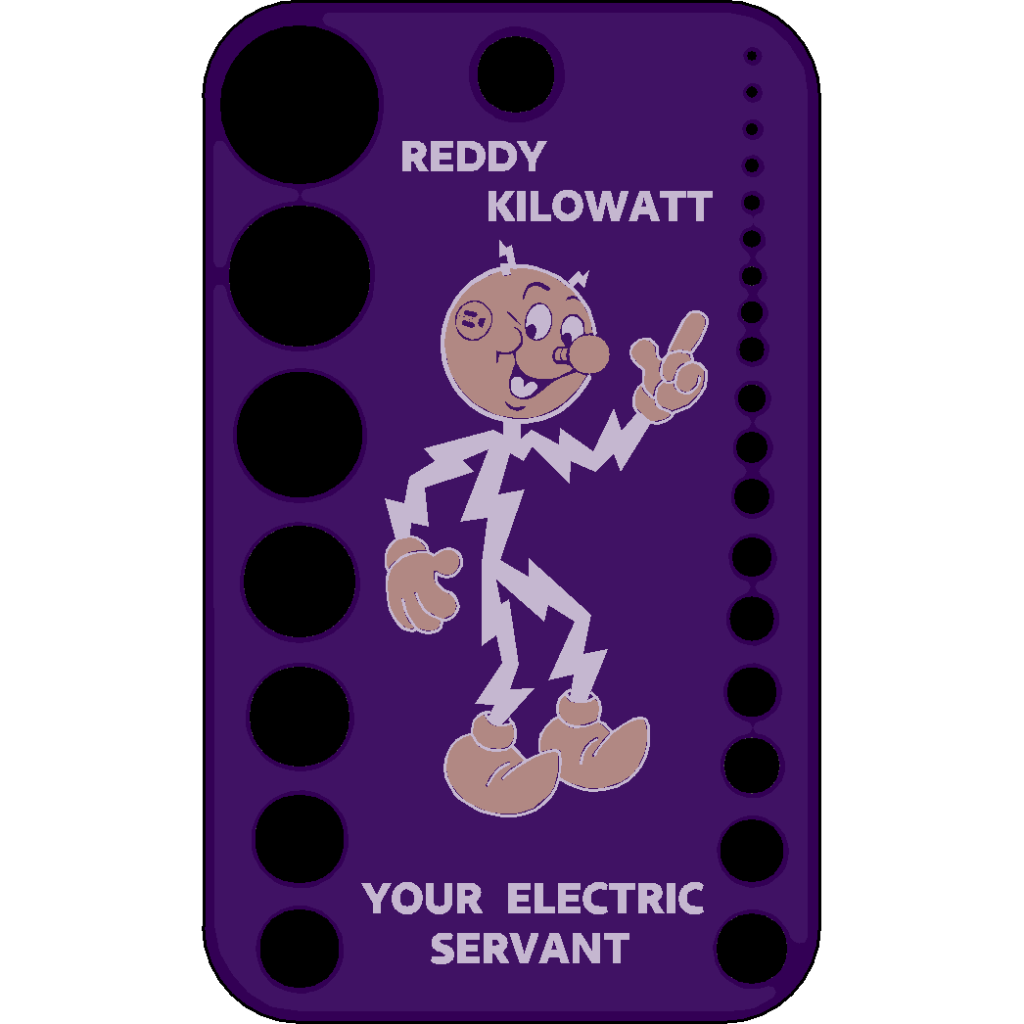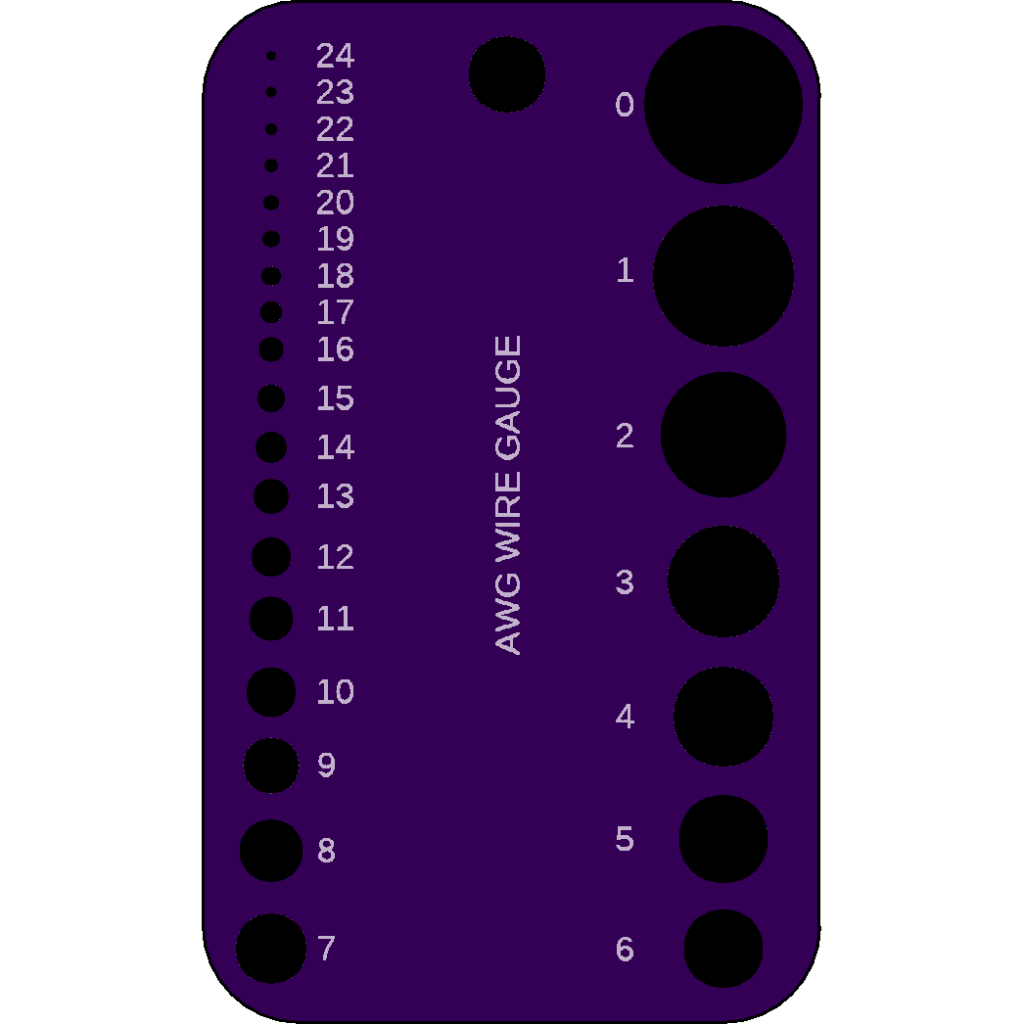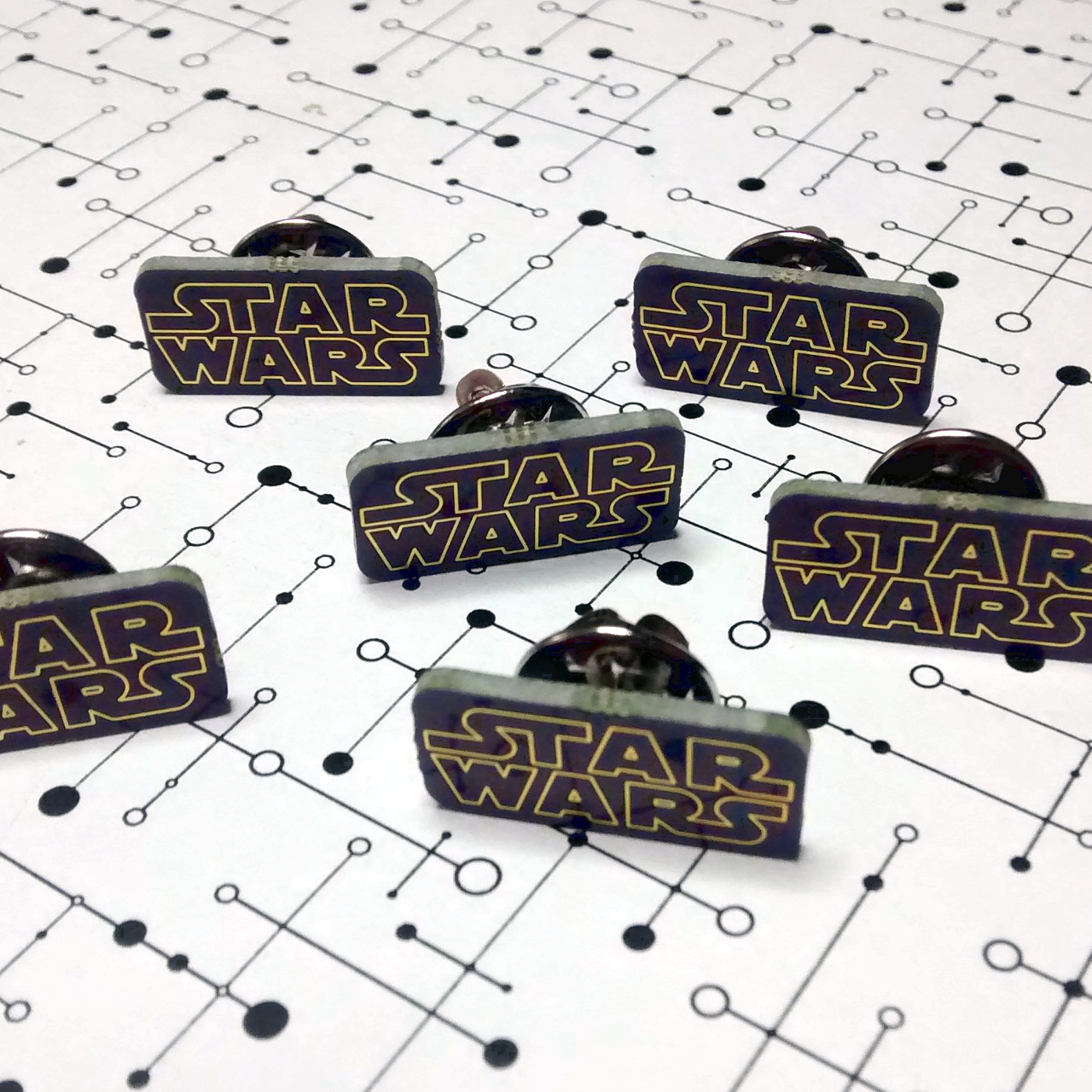Unique Christmas gifts are the best and when I saw this post on Hackaday about making lapel pins from PCB’s I knew exactly what my family was getting this year. The idea is simple; put some art on the front and a copper pad on the back for soldering a butterfly tie tack pin. In reality it was more work than I thought and took a handful of software tools to get the art imported into Diptrace PCB design.
The first step was to find some vector art for each pin. My neices and nephews have differing hobbies and I needed something special for each. Luckily the boy’s are all Star Wars fans (including the adult “boys”) and that covers them. The girls however have other past times. Two neices are golfers, one is a swimmer and the other loves Sea Horses. The entire family are Cubs fans so I made one of those for everybody. I’m not a graphic artist so I went out to Google Image Search to find some vector/svg images. In the search options you can select to only show images “Labeled for reuse with modification.” Most of the art I chose was under this usage right and came from wikipedia.
With the SVG files in hand, I first pulled them into Inkscape and cleaned them up as best I could, removing any excess lines and filled areas. Essentially, I tried to make them simple line drawings and shrunk them down to size (about 15mm). Diptrace can only import DXF art files and I exported them from Inkscape to DXF format but Diptrace would not import them. There’s different versions of the DXF format so I ended up pulling the Inkscape DXF (export options: No ROBO Master, No LWPOLYLINE, Base unit mm) into LibreCAD and exporting again to DXF R12. In the Diptrace pattern editor, the LibreCAD DXF R12 files were imported successfully.
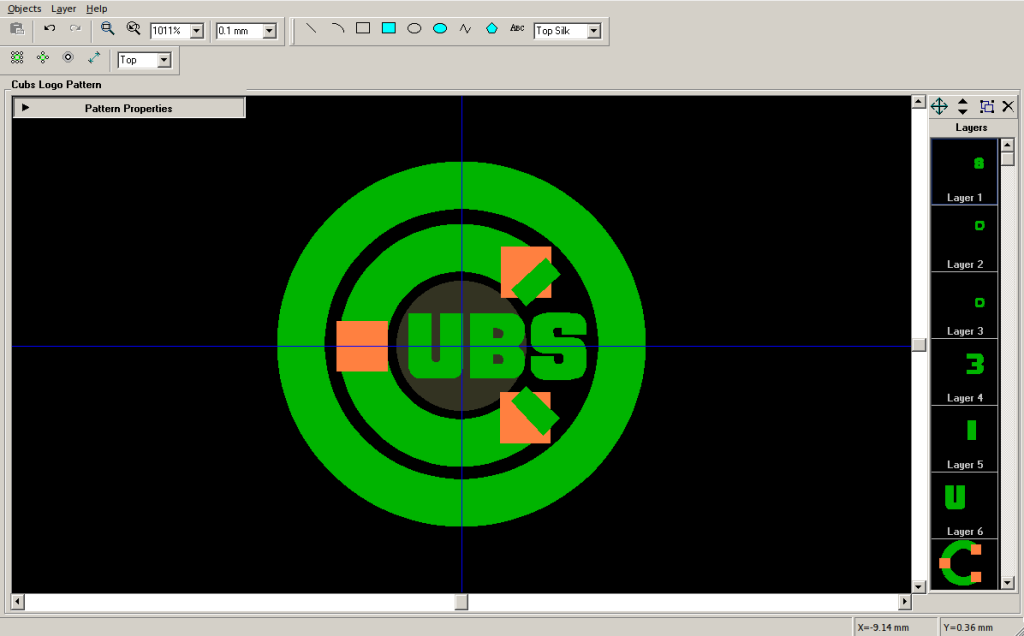
Importing art into Diptrace proved to be tedious work. Any imported curved lines were actually comprised of many small lines. I was not able to import any shape as filled even though the option exists in Diptrace. Some of the lines imported were somewhat distored and some areas needed to be filled so I had to recreate them with the tools in Diptrace. For example, in the Cubs logo I recreated the outer circle in Diptrace then removed all the imported lines. The large “C” was redrawn as an arc but the ends of an arc are curved so I had to create a filled box polygon to get square ends on the “C”. Also notice the multiple filled shapes used for the letter “B” in the layers section on the right (layers 2-5).
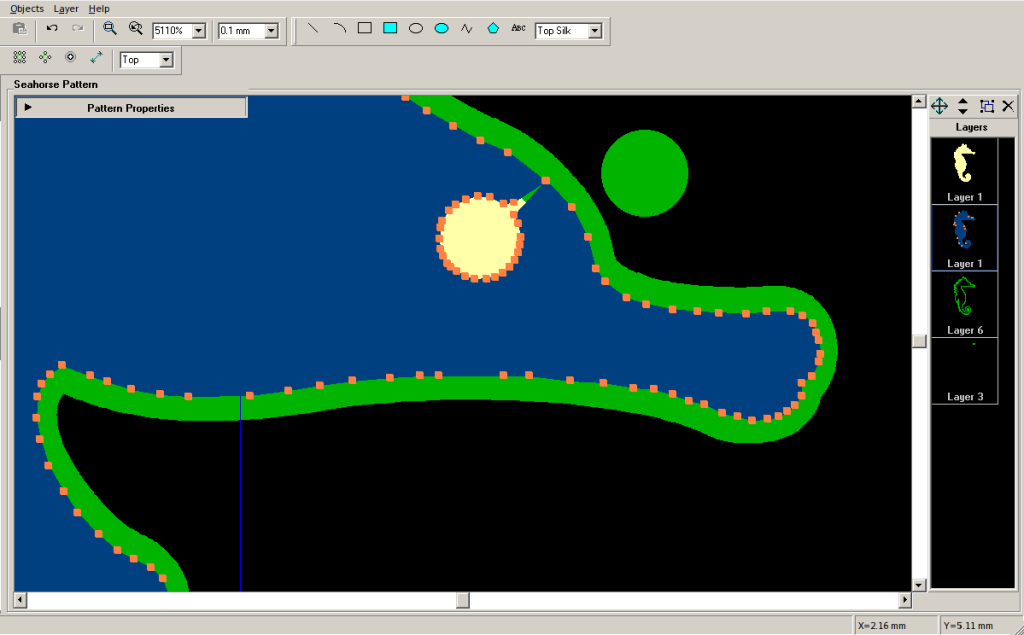
The Sea Horse was by far the most difficult. The entire shape of it had to be redrawn as a filled polygon on the top copper layer. I traced the imported shape and removed it when finished. Then I cloned that layer and converted it to top mask so that the Sea Horse would show as gold/copper. To get the eye to show I had to add/adjust points of the top mask layer to make a circle and then place a filled circle on it (top silk). Finally, I had to redraw the outline again as silk to get the white outline.
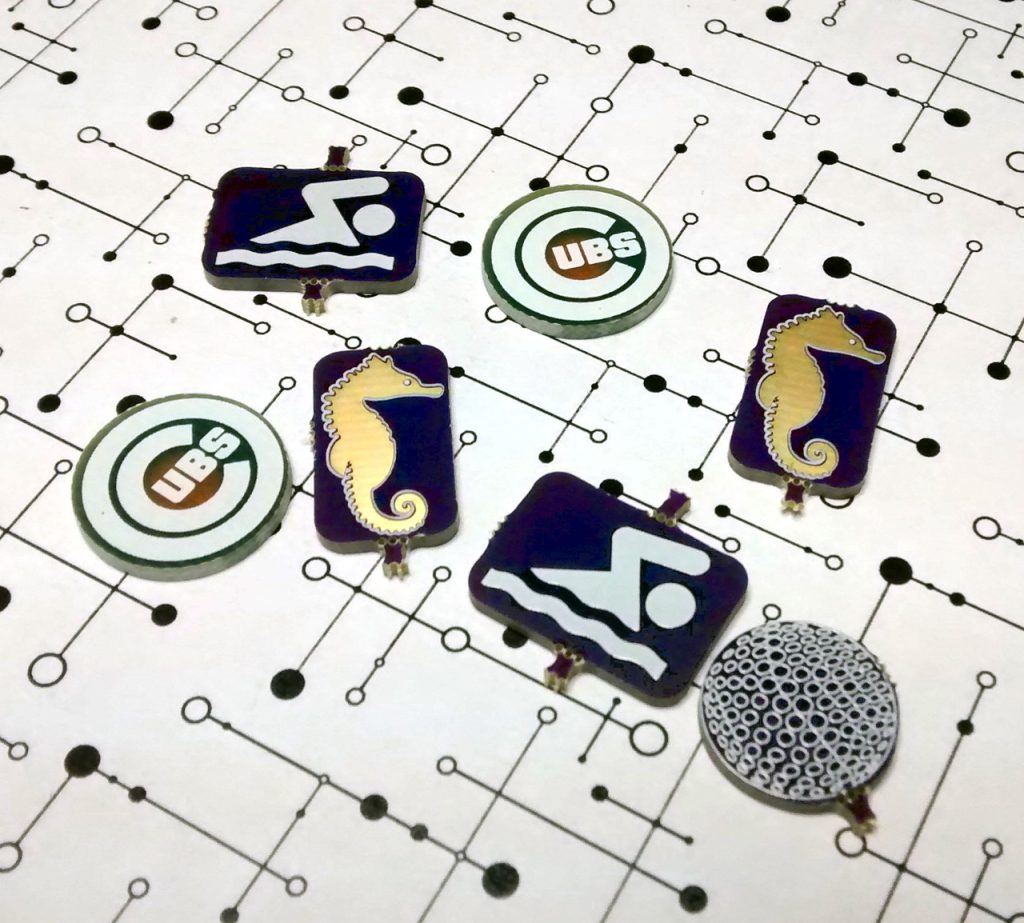
The Star Wars logo was pretty straight forward and worked out good. I imported it as top copper and then duplicated it for top mask so that it appears gold. The swimming symbol had to be redrawn as top silk, but it was a simple shape and didn’t take long. The golf ball SVG orignally had shaded areas as if the light was shining down on it from the top. When imported into Diptrace it only had circles on the bottom half and looked a little strange. I copy/pasted some circles for the upper half of the ball. It’s still not a perfect golf ball, but it’s close enough.
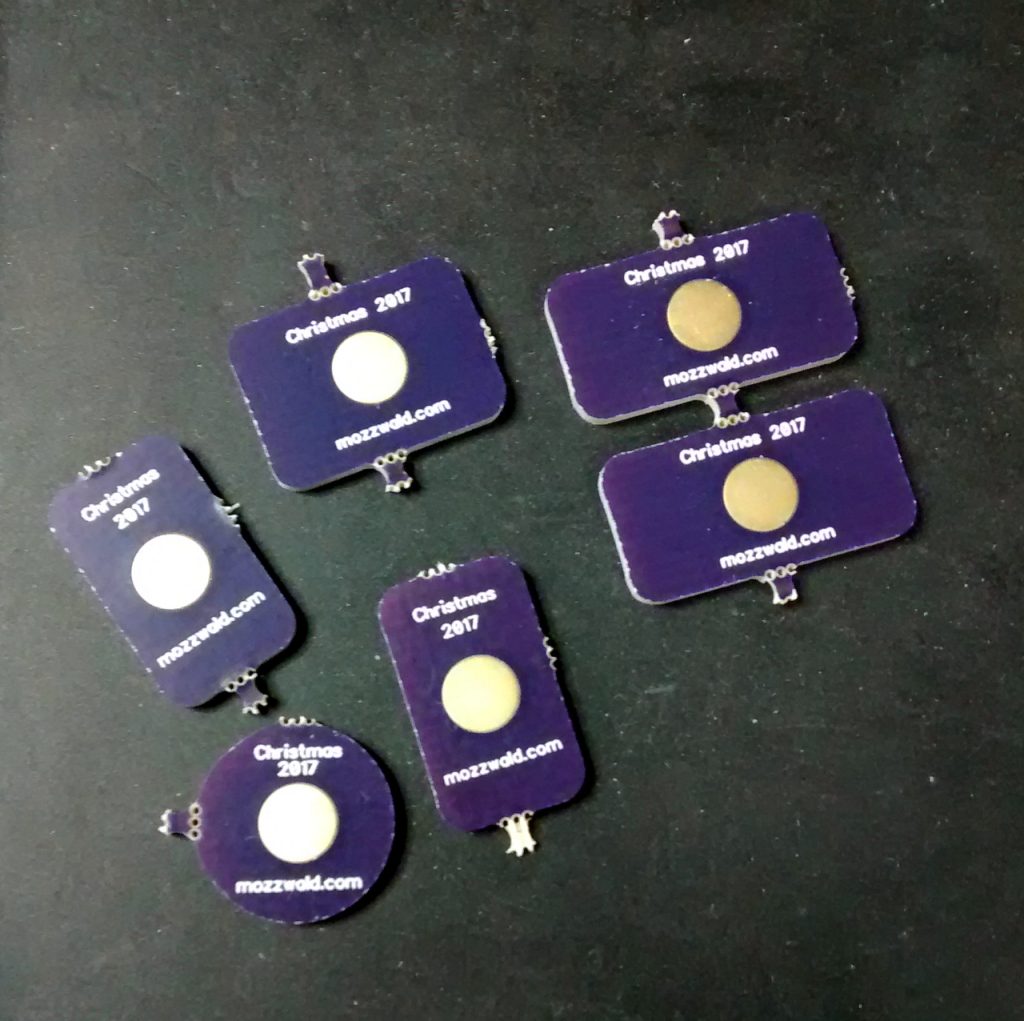
The back side of all the pins have silk with “Christmas 2017” and “mozzwald.com” on them (hopefully the kids will enjoy reading how I made these ;-). I picked up a pack of 100 Butterfly Clutch Tie Tack Pins from eBay. The base of the pins measure ~4.5mm so I placed a 5mm copper pad in the center of the back for attachment. The purple OSHPark boards needed the tabs removed and filed down smooth, but the Cubs pins were ordered with blue soldermask from Allpcb.com and were cleanly cut. Each pin was soldered with Lead Free solder paste and a hot air pen then cleaned with isopropyl alcohol to remove any flux residue.
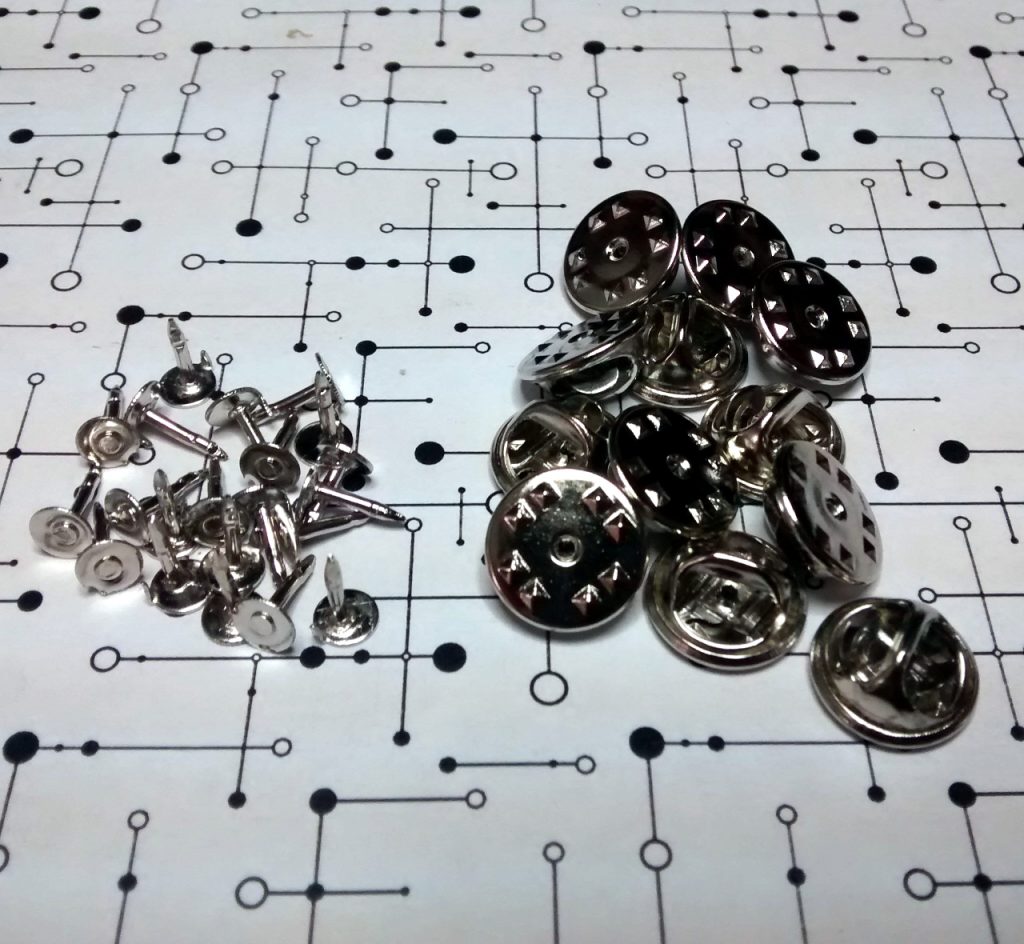

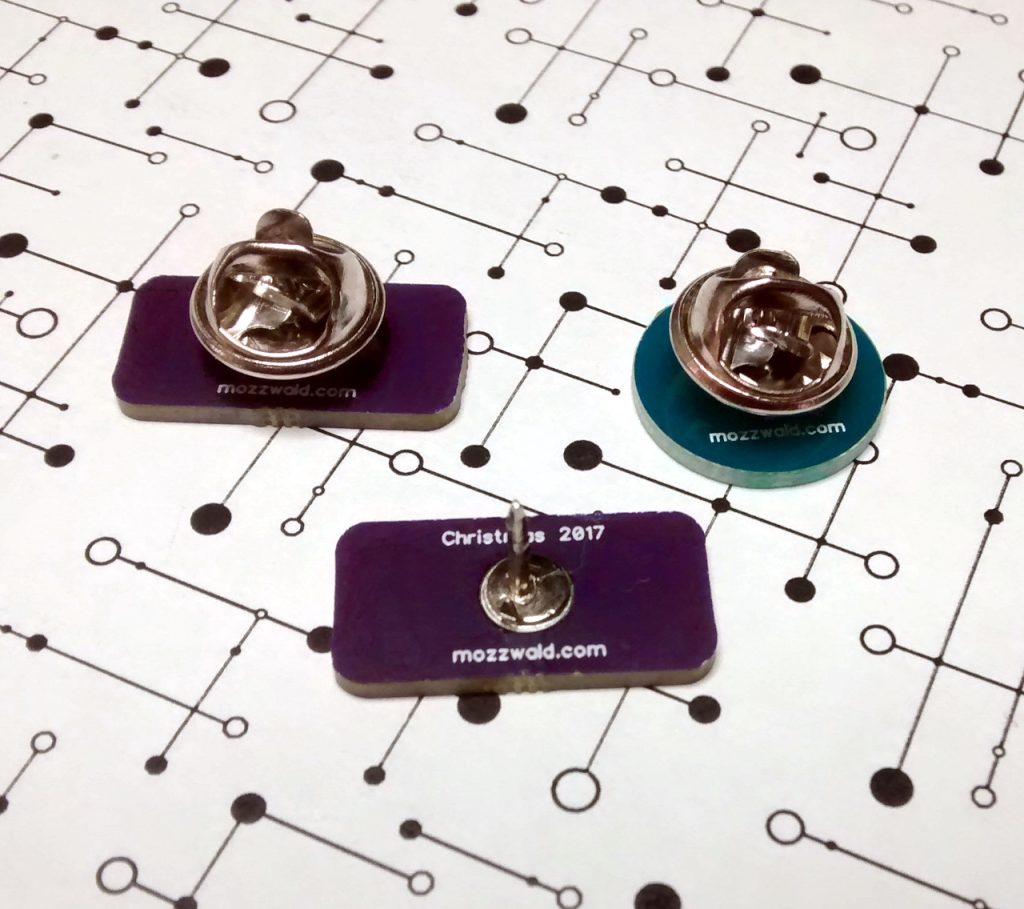
I had a lot of fun with this project in spite of the tediousness and I’m already working on a couple more pins for funsies. With some practice I think you could make some pretty cool designs even with the Diptrace limitations. I would love to hear any tips or other experiences about Diptrace image importing. The pcbs made by OSH Park are shared and available to order by clicking the images below:
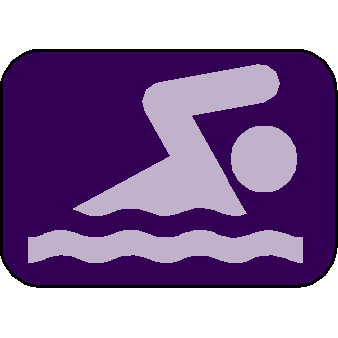
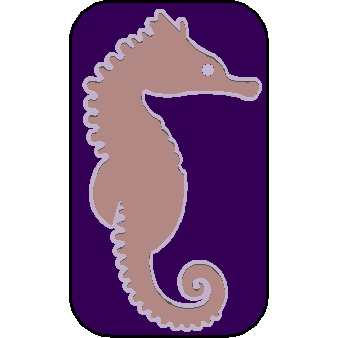
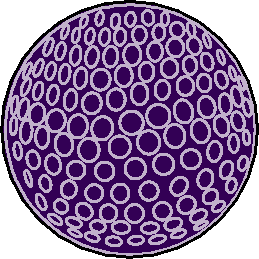
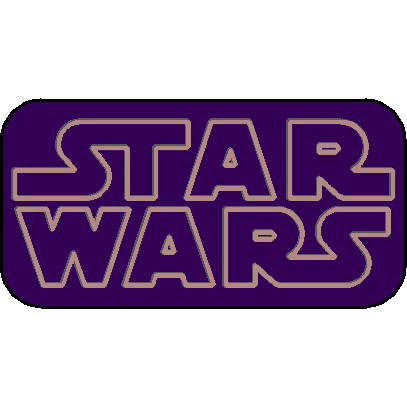
Update: I created an AWG keychain / ruler with Reddy Kilowatt on it using the same techniques
https://oshpark.com/shared_projects/QmWo9ZUr
